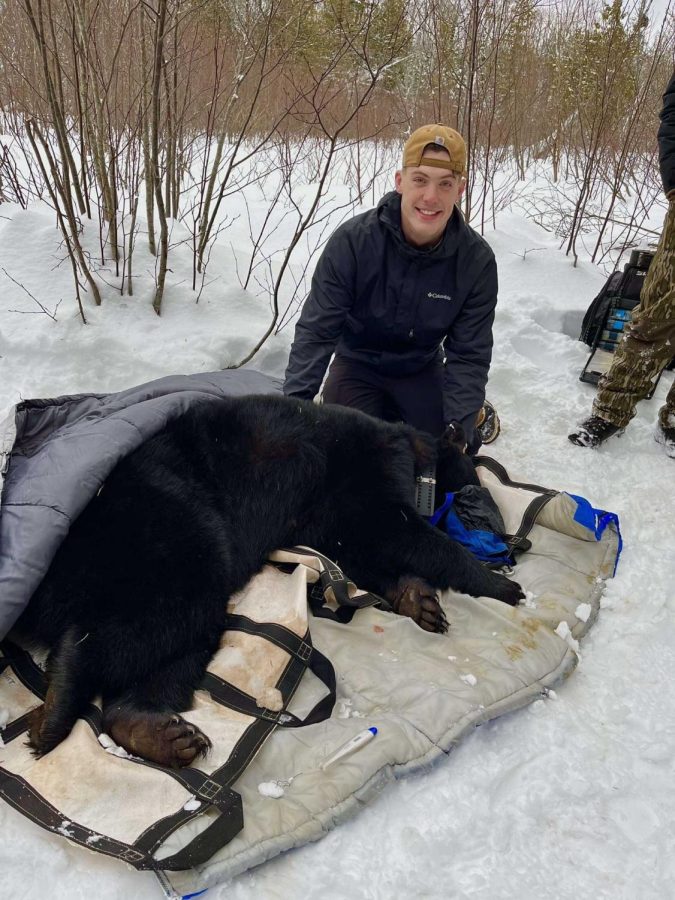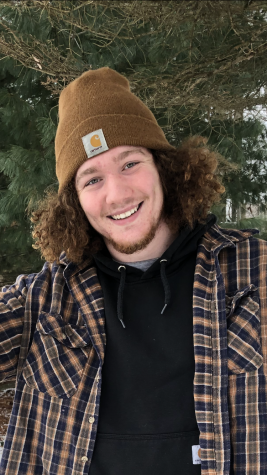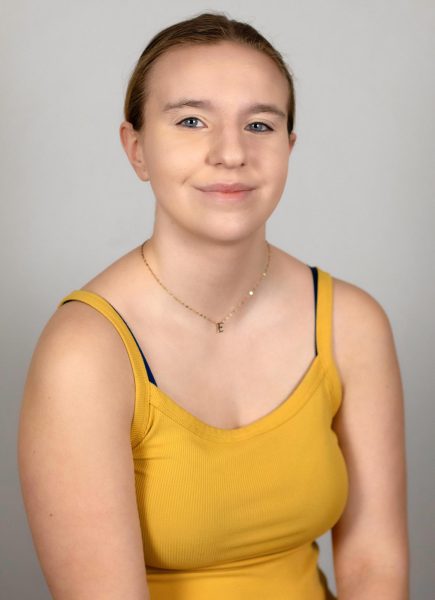Profile – Carnivorous research with Anthony Clyne
Photo courtesy of Anthony Clyne
SAFTEY FIRST – Anthony Clyne sits with a bear his team was able to capture easily due to the special techniques used by the DNR.
February 9, 2023
NMU senior Anthony Clyne’s first intrigue with nature came from his trips with his father to their cabin in Oscoda, Michigan. Clyne and his dad would hunt, fish and explore nature. This spark of interest in nature led him on the path to becoming a Fisheries and Wildlife Management Major here at Northern.
Through his time at NMU, Clyne eventually found an excellent opportunity to work at the Michigan Department of Natural Resources (DNR).
“I volunteered in a lab processing bear teeth and then met a couple people and the position opened up and I applied,” Clyne said.
He is currently working in a student assistantship through Northern and as a student assistant for the carnivore and laboratory specialists of the DNR.
Clyne’s current work at the DNR includes the Surrogate Sow program and researching carnivore movement patterns.
“I work with the carnivore specialists of the DNR, and they have a program that’s been going on for a long time called the Surrogate Sow program,” Clyne said. “It’s where we have a network of these sows, which are female collared bears, and then we give the orphan cubs to these mothers and hope that these new moms take care of them.”
While assisting with the Surrogate Sow program, Clyne and the DNR also study the movement patterns of the bears.
“We also learn a lot about their movement patterns with the GPS collars and our hope is that the bears recently collared can become part of this program,” Clyne said. “That way we don’t need to find new mothers out in the wild and use man hours for that.”
Clyne recently went out to collar a bear at its den, and seeing three yearlings has become one of his favorite memories working from with the DNR. The DNR team of researchers went out on snowmobiles to check on the mother bear and its cubs multiple times to prepare for the collaring of the male cub.
“We went out about two weeks prior, and just as a crew with three of us,” Clyne said. “The mother was already collared, and she was in hibernation. We used the collar to find where she’s at and she was on public land. We slowly built out there and kind of made a trail up to her and marked it. Then we came back two weeks later. Same thing, but we brought a whole crew to work up all three and the yearlings.”
The team of researchers was able to briefly capture the bears using knowledge of hibernation times and using a chemical sedative to immobilize them before they collared them.
“They enter this state called ‘stupor’ where they are pretty much hibernating but they’re not fully asleep,” Clyne said. “Safety precautions wise we just went in very quietly and administered the chemical immobilization to them without making too much noise or disturbing the bears at all.”
The male bear cub was successfully collared and added to the program.
“The hope is to get a network of bears up here,” Clyne said. “The plan is to get this program all spread out through the U.P. and get a handful of bears that are reliable that we can count on to be a part of the program.”
Clyne’s further goals with the DNR and Northern include multiple options of success.
“My personal goal is to … go on and get my Ph.D. First [my] master’s after Northern and then my Ph.D. in wildlife ecology,” Clyne said. “I want to be a wildlife research specialist for some state agency, or U.S. Fish and Wildlife, or I’d like to become a professor one day and teach wildlife ecology [and] population dynamics.”



























